If you’re looking to jump-start your garden this winter season, consider planting some winter rye! This robust cereal grain can be planted in the early fall and serve as a great source of green manures, forage crops, or cover crops in colder months. Winter rye is hardy enough to survive even through the harshest winters. Plus, this powerful little crop offers numerous benefits for your soil health: it helps conserve moisture and enhance fertility over time—all while reducing nutrient runoff from heavy rains and preventing soil erosion. But if you’re wondering when exactly to plant winter rye? The optimal time depends on a few key factors like frost dates, temperatures, soil quality, location—and more! Read on to learn more about timing your seedings correctly so you can lay down a solid foundation for future successes in your garden!
What Are Cover Crops?
Cover crops are plants grown between cash crops, such as wheat, to increase soil fertility. Cover crops can also protect the soil from erosion and reduce weed growth. They absorb excess nutrients from the soil and help prevent leaching of minerals into nearby water sources.
In addition, cover crops are beneficial for wildlife habitat by providing a place for birds and other animals to nest and feed. Cover crops can also help to suppress pests and diseases by providing competition for nutrients and space, making it harder for pests to survive. In general, cover crops provide a tremendous amount of benefits to agricultural systems, as well as the environment. [1]
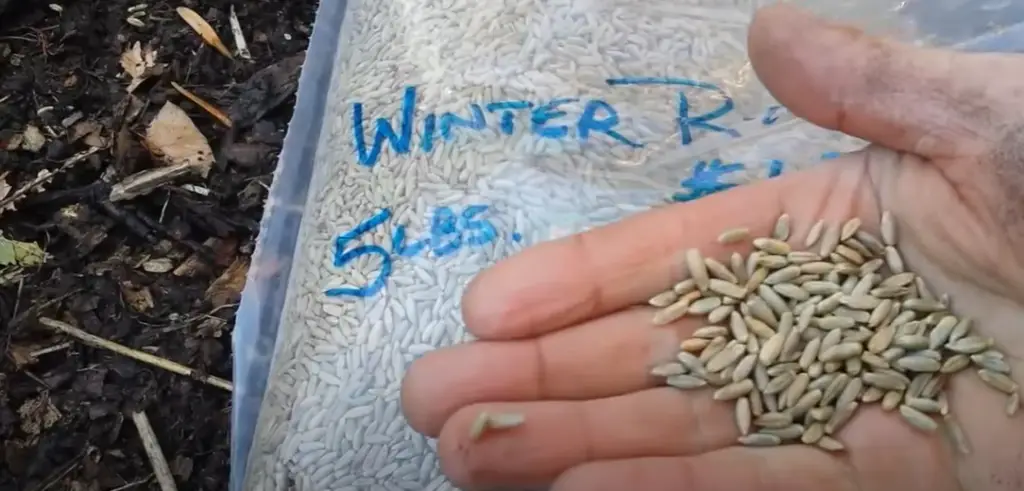
Types of Cover Crops
Cover crops are an important tool for sustaining soil health. They can be used to improve fertility, increase organic matter, control weeds, reduce soil erosion, and protect against drought. Cover crops can be classified based on their seasonal growth habits into annuals, biennials, and perennials. [2]
Annuals
Annual cover crops are planted each year, and typically grow quickly and provide large amounts of biomass. Examples include buckwheat, several legumes such as clover and vetch, sorghum-sudangrass hybrids, oats, and rye.
Biennials
Biennial cover crops can be grown for two full seasons, providing soil protection and fertility benefits over a longer period. Examples include Austrian winter pea and red clover.
Perennials
Perennial cover crops are planted once and then allowed to regrow year after year with minimal maintenance. They can provide long term erosion control, but their slow growth rate means they may not produce as much biomass as annuals or biennials. Examples include grasses such as tall fescue and alfalfa, as well as some legumes like birdsfoot trefoil and white clover. [3]
Benefits of Cover Cropping
Cover Cropping offers a number of benefits to farms and landowners. [4]
- Improves Soil Quality: Cover cropping adds organic material to the soil, improving its structure and fertility, which makes it easier for crops to grow. Additionally, the cover crop can help protect against erosion and reduce nutrient loss from the soil.
- Reduces Pest Pressure: Cover cropping helps to create a more diverse environment, attracting beneficial predators that feed on pests, helping to control them naturally.
- Improves Water Quality: Cover crops can help capture and store nutrients in the soil, reducing the amount of runoff and preventing pollutants from entering nearby water sources.
- Enhances Wildlife Habitat: By providing cover and food for wildlife such as birds, mammals, insects, and more, cover cropping can help create a healthier and more diverse ecosystem.
- Increases Yields: Cover crops can increase yields by improving the overall health of the soil and providing nutrients for the following crop.
- Saves Money: Cover cropping is relatively inexpensive to implement and maintain compared to other methods of soil management. Additionally, it can reduce the need for fertilizers and other inputs, which can help save money on production costs.
- Enhances Biodiversity: By planting a variety of cover crops, farmers can create an environment that is more biodiversity friendly. This helps promote healthy crops and resilient ecosystems.
- Improves Soil Health: Cover cropping helps build up soil health, reducing compaction and creating a more porous structure. This helps crops to absorb nutrients more efficiently and produce higher yields.
- Reduces Weeds: By planting cover crops, farmers can reduce the number of weeds that may otherwise compete with their crops for resources such as sunlight, water, and nutrients.
- Enhances Carbon Sequestration: Cover crops can help to capture and store carbon in the soil, improving its fertility and reducing greenhouse gas emissions. [5]
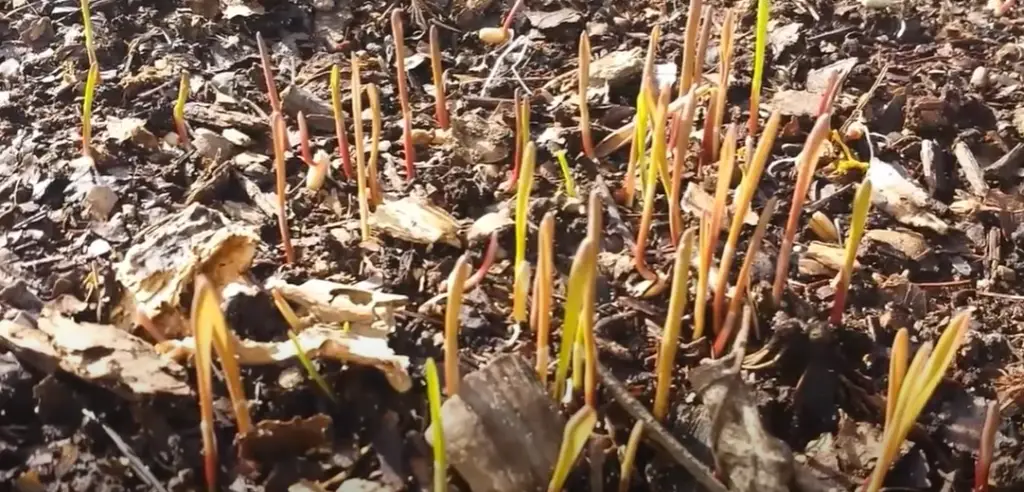
What is Winter Rye Grass?
Winter rye grass is a type of cereal grain, which is grown in colder climates. It is popular as a cover crop, forage, and feed grain. Rye grass can be planted in the fall after other crops have been harvested and will stay green throughout the winter months. It has a very deep root system which helps to loosen soil and prevent erosion on slopes. It is also known to be drought tolerant and can tolerate a wide range of soil types.
Rye grass can be planted by scattering the seed directly onto the soil or by planting it in rows. It should be planted at least six weeks before the first frost date for best results. When grown as a cover crop, rye grass will help to reduce weeds, retain moisture, and add organic matter to the soil. It can also be harvested and used for hay or silage. [6]
Why Should I Plant Winter Rye Grass?
There are several key benefits to planting winter rye grass for the cooler months. These include:
- Erosion Control – Winter rye grass helps to protect soil from wind and water erosion, which is especially important in areas of high rainfall or snowmelt. It also reduces compaction of the soil by increasing organic matter, improving drainage, and helping keep soils at optimal temperatures for healthy turf.
- Weed Suppression – Winter rye grass is an effective weed suppressant and can help keep weeds from germinating in areas where they would otherwise thrive.
- Nutrient Management – Planting winter rye grass helps recycle nutrients into the soil, making it easier to maintain a nutrient-rich environment that supports healthy turf.
- Soil Organic Matter – The roots of the winter rye grass help to increase soil organic matter, which can help improve soil water-holding capacity and maintain a healthy balance between oxygen and carbon in the soil.
- Winter Hardiness – Winter rye grass is extremely hardy and capable of surviving even very harsh weather conditions, making it an ideal choice for winter lawns.
- Snow Cover – Winter rye grass can also provide some additional protection against snow and ice buildup, helping to keep the turf from becoming too damaged in the winter months.
- Drought Tolerance – Winter rye grass is capable of surviving periods of drought due to its deep rooting system and dense canopy, making it a great choice for areas that experience extended periods of dry weather.
- Fast Establishment – Winter rye grass is also able to establish itself quickly, making it a great choice for areas where turf needs to be established in a short period of time.
- Low Maintenance – Winter rye grass requires minimal maintenance and doesn’t require frequent mowing or fertilizing, making it a great choice for those who want to keep lawn care as simple as possible.
- Low Cost – Winter rye grass is typically quite inexpensive and easy to find, making it an economical choice for those on a budget. [7]

How to Grow Winter Rye?
Winter rye is a great crop to add to your garden rotation. It’s easy to grow and can provide a nutritious grain for food or feed. Here are step-by-step guide on how to successfully plant and harvest winter rye:
Step 1: Select the Right Variety
When selecting a winter rye variety, take into account your growing conditions and climate. Colder climates may require “winter-hardy” varieties of rye that are better suited to withstand cold temperatures. Consider also the length of growing season; shorter seasons will benefit from earlier maturing varieties of rye.
Step 2: Prepare the Soil
Rye grows best in well-drained, fertile soils with a pH of 6.0 to 7.5. Before planting, work plenty of organic material like compost or manure into your soil to improve fertility and drainage.
Step 3: Planting the Seeds
Sow winter rye seeds in early fall, after the temperatures have cooled to the mid-50s Fahrenheit (around 10°C). If you live in a colder climate, consider planting a bit earlier. Plant the seeds 1/2 inch deep and 4 inches apart in rows that are 30 inches apart. For best results, cover with weed-free straw mulch after sowing.
Step 4: Care and Maintenance
Keep the soil evenly moist by watering when necessary. You may also want to consider adding a nitrogen-rich fertilizer or compost tea every few weeks to boost growth. For best results, keep weeds away from your rye plants by using mulch or hand weeding.
Step 5: Harvesting Your Rye
Your winter rye is ready to harvest when the grain heads turn from green to yellow. Cut the stalks with a sickle or shears and bundle them up for easy transportation. Then, you can use several methods to thresh (separate) the grain from the straw; some farmers prefer to beat it out with a flail or stomp on it with their feet!
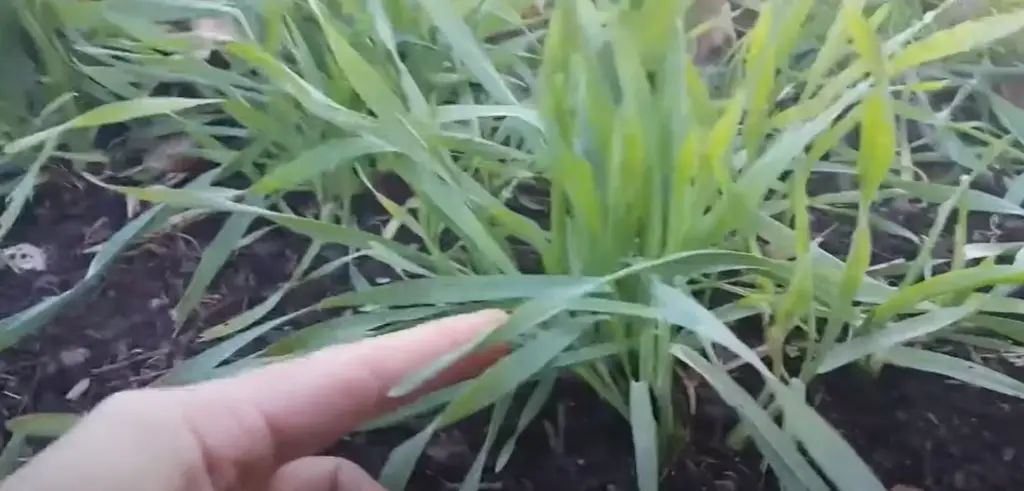
Step 6: Storing Your Rye
Once you’ve separated the grain from the straw, it’s important to store your rye correctly. The grain should be stored in a cool, dry place away from rodents and insects. You can also consider drying your rye in the sun before storage for even more protection. [8]
Can Winter Rye Have Diseases?
Several common diseases of winter rye include crown rust, leaf blotch, stem rust, take-all root rot, and eyespot.
Crown rust
Crown rust is caused by the fungus Puccinia coronata. This disease appears as yellow-orange spots on the leaf blade, which later become reddish-brown pustules. These pustules can spread over large areas of the leaf and reduce grain yields significantly if not addressed promptly.
Ways to get out:
- Reduce the amount of humidity in the air by increasing air circulation.
- Plant resistant varieties that are less susceptible to the disease.
- Rotate crops and use long crop rotations to avoid recurrence in subsequent years.
- Use fungicides as a last resort when other measures have not worked.
Leaf blotch
Leaf blotch is caused by the fungus Drechslera secalis. This disease appears as dark, round lesions on the leaves that may have a yellow halo around them. The lesions enlarge and eventually turn white or gray in color. As with rust, leaf blotch can cause significant damage to grain yields if left untreated.
Ways to get out:
- Practicing crop rotation and planting resistant varieties are good preventive measures.
- Remove any affected plants from the field to reduce the spread of the disease.
- Use fungicides as a last resort when other measures have not worked.
Stem rust
Stem rust is caused by the fungus Puccinia graminis. This disease appears as orange-brown pustules on the stems and leaves that can eventually spread over large areas of the plant. Stem rust can significantly reduce grain yields if not managed properly.
Ways to get out:
- Planting rust-resistant varieties is an effective way to reduce the effects of stem rust.
- Timely application of fungicides can also help manage the disease and reduce its impact on grain yields.
- Cultivating crop rotation practices by alternating between wheat and other crops such as barley, oats, or corn will decrease the chance of infection from stem rust.
- Proper nitrogen management is important as well, since too much nitrogen can increase the levels of leaf water content, making wheat more susceptible to stem rust.
- Appropriate irrigation and drainage practices will help reduce the spread of disease by preventing standing water near plants that may act as a breeding ground for fungal spores.
Take-all root rot
Take-all root rot is caused by the fungus Gaeumannomyces graminis. This disease appears as black lesions on the roots and is very difficult to diagnose early, as the damage is done below ground. If left untreated, take-all root rot can cause significant crop losses due to decreased growth and weak stems.
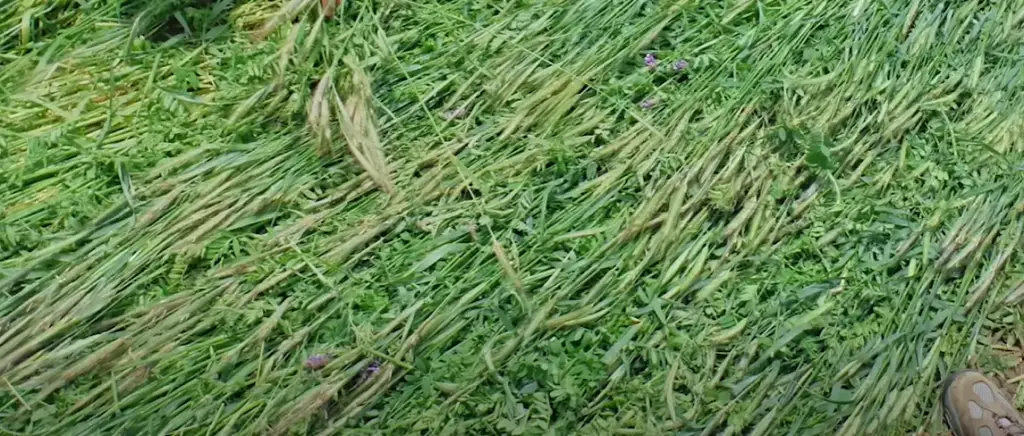
Ways to get out:
- Use crop rotation.
- Test soil regularly for disease and adjust your planting practices accordingly.
- Apply fungicides to existing crops, as well as after planting new crops.
- Incorporate organic matter into the soil to improve drainage and promote healthy root growth.
- Practice good sanitation techniques by cleaning tools and equipment between use on different fields or crops.
Eyespot
Eyespot is caused by the fungus Puccinia striiformis. This disease appears as small, dark spots on the leaves that can eventually turn white. Eyespot typically does not cause significant damage to yield, but it can weaken the plant and make it more susceptible to other diseases.
Ways to get out:
- Avoid overwatering and ensure good drainage so that the plants do not sit in wet soil.
- Use disease resistant varieties when possible.
- Practice crop rotation to prevent eyespot spores from continuously infecting the same plants year after year.
- If necessary, apply fungicides to protect against infection. [9]
FAQs
What temperature do you plant winter rye grass?
Winter rye grass is best planted in the fall when the soil temperature has cooled to around 50°F or 10°C. The seeds should be planted at a depth of 1/4 to 1/2 inch and should germinate within two weeks if the soil is kept moist. For optimal growth, water your winter rye grass regularly throughout its growing season and fertilize it every few months with a nitrogen-rich fertilizer. In addition, mow your winter rye grass at least once or twice a month to ensure that it remains healthy and vigorous. Doing so will also help to keep it free from weeds and pests.
What is the best month to plant rye grass?
The best time to plant rye grass depends on the region where it is being planted. Generally, you should sow your seeds in late summer or early fall in order to give the grass plenty of time to establish itself before winter sets in. In milder climates, however, like regions with Mediterranean climates, planting can occur as early as April and continue up until September.
It is important to note that ryegrass does not do well in extremely cold temperatures and should be planted in areas that experience mild winters. Additionally, rye grass needs plenty of water and direct sunlight, so avoid planting it in overly shaded or boggy conditions.
What temperature does rye germinate at?
Rye germination is an important step in the production of rye grain. Rye will begin to germinate at temperatures as low as 40 degrees Fahrenheit (4.4 Celsius). It prefers a temperature of 55-65 degrees Fahrenheit (12.8-18.3 Celsius) for optimal growth and development, but can still continue to germinate at higher temperatures. Seeds can still germinate at temperatures up to 90 degrees Fahrenheit (32.2 Celsius). Rye is a hardy grain and able to tolerate low fertility soils, cold winter weather, and drought conditions. Also, rye has excellent resistance to the ergot disease caused by a fungus that can weaken other grains such as wheat and barley. For these reasons, rye is an increasingly popular choice for farmers and gardeners.
What is the best fertilizer for winter ryegrass?
The best fertilizer for winter ryegrass is one that provides a balance of nutrients and supplies a slow release of nitrogen throughout the growing season. When selecting a fertilizer for winter ryegrass, it’s important to look for one with more than just nitrogen as this can encourage excessive top growth and a lack of root development. A good fertilizer should contain additional macronutrients, such as phosphorus and potassium, in order to support the plant’s growth and development. Additionally, a fertilizer should also contain micronutrients like calcium, magnesium, boron, manganese, copper and zinc which help with nutrient uptake and healthy cell formation. It is important to pay attention to the recommended application rates as applying too much fertilizer can result in burn injury to the grass. Lastly, a slow release nitrogen source should be selected, as this will help avoid nitrogen leaching and runoff.
Useful Video: How to Plant Winter Rye as a Cover Crop
Conclusion
Winter rye can be planted as early as late summer in the northern hemisphere. It is usually sown in a fall-winter rotation to benefit soils and fields. Planting winter rye should not be done more than one month before a killing frost, otherwise there is a risk of it getting killed off by the cold weather. Additionally, if planting after October 15th, the seed should be treated prior to planting with a fungicide to prevent diseases from establishing in the stand over winter. Finally, though planting winter rye can come with its challenges, it also offers unique advantages as it offers more vigorous growth, provides an ideal food for birds, and can help improve soil health and fertility throughout colder months when not many other cover crops work well. All in all, farmers should research further into which timing works best for their particular area when considering when to plant winter rye.
References:
- https://www.sare.org/resources/cover-crops/
- https://eos.com/blog/cover-crops/
- https://www.cropnutrition.com/resource-library/cover-crops-type-makes-a-difference/
- https://www.farmers.gov/blog/cover-crops-benefit-both-commercial-farmers-and-urban-gardeners
- https://www.sare.org/publications/managing-cover-crops-profitably/benefits-of-cover-crops/
- https://www.thespruce.com/all-about-winter-rye-grass-5196072
- https://www.agweb.com/news/crops/crop-production/10-reasons-why-you-should-love-winter-rye
- https://www.gardeningknowhow.com/edible/grains/cover-crops/winter-rye-grass-growing.htm
- https://www.yara.co.uk/crop-nutrition/rye/pests-and-diseases/





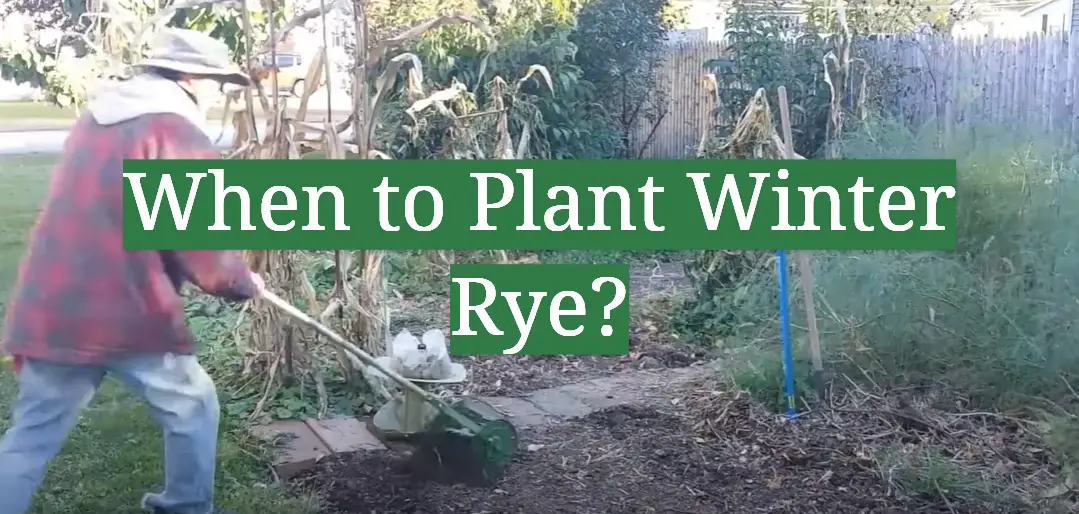



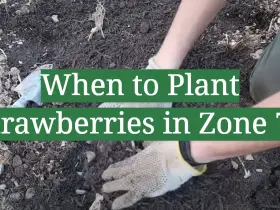
Leave a Reply
View Comments